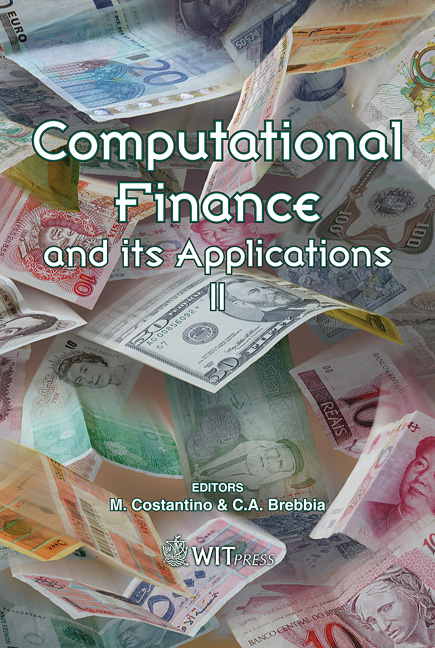Heuristic Approaches To Realistic Portfolio Optimisation
Price
Free (open access)
Transaction
Volume
43
Pages
10
Published
2006
Size
920 kb
Paper DOI
10.2495/CF060351
Copyright
WIT Press
Author(s)
F. Busetti
Abstract
Previous research in portfolio optimisation has incorporated some real-world aspects but, to the best of our knowledge, none has incorporated all of them in a model applicable to actual real-world portfolios. We therefore develop a realistic model, investigate the efficiency of its solution by two heuristic methods, genetic algorithms and tabu search, and then examine the insights provided by the optimisation of real portfolios. Our model is based on the classical mean-variance approach, enhanced with floor and ceiling constraints, cardinality constraints and nonlinear transaction costs that include a substantial illiquidity premium, and is applied to a large 100- stock portfolio. We find that for large portfolios the performance of genetic algorithms is three orders of magnitude better than that of tabu search. The results confirm that both floor and ceiling constraints have a substantial negative impact on real portfolio performance. Optimal portfolios with nonlinear costs and cardinality constraints often contain a large number of stocks with very low weightings. Their function is to diversify risk, and floor constraints hamper this, damaging portfolio performance. In addition, nonlinear transaction costs that are comparable in magnitude to forecast returns tend to diversify portfolios materially. Keywords: portfolio optimisation, efficient frontier, heuristic, genetic algorithm, tabu search. 1 Introduction While the basis for portfolio optimisation was established by Markowitz [1] in a seminal paper over 50 years ago, it is often difficult to incorporate real-world constraints into the classical theory. In practical portfolio construction there are
Keywords
portfolio optimisation, efficient frontier, heuristic, genetic algorithm, tabu search.





